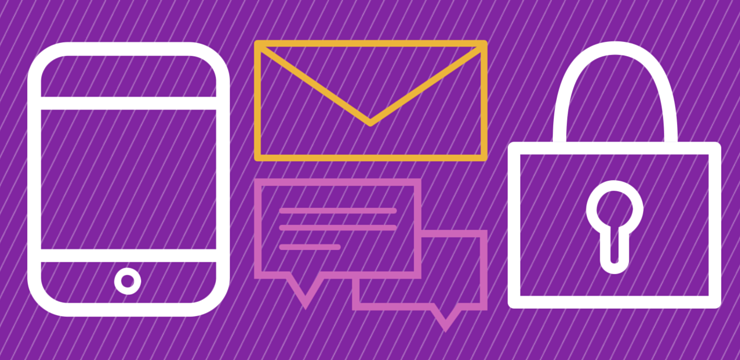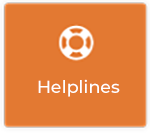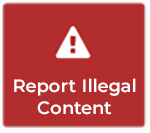UP2US Lesson 2: Private and Anonymous

This lesson will give students the opportunity to probe more deeply into the nature of cyber bullying and how it differs from traditional offline bullying by looking specifically at issues around anonymity, privacy and freedom of speech.
- +Curriculum Links
- Junior Cycle SPHE Short Course Strand 3:
Anti-bullying:
Critique the ways in which we include and exclude others and the impact of this.
Additional learning outcomes:
Strand 2: Respectful communication. Differentiate between passive, assertive and aggressive communications.
Strand 1: My rights and the rights of others. Debate issues about their personal and social rights, including the right to feel safe, as they apply themselves and others. - +Resources and Methodologies
- Resources: Video clip from Let’s Fight It Together (available online at www.webwise.ie/up2us), Poster board, Colouring utensils, Copies of Worksheet 2.1.
- Methodologies: Walking debate, Simulation activity, Personal/written reflection
- +Learning Outcomes
- Learning outcomes: Students will have debated issues of online anonymity, privacy and freedom of speech, particularly as they relate to cyber bullying. Students will have reflected on the effects specific to cyber bullying.
- +Key Skills
- Managing myself, Stay well, Working with others, Numeracy
- +Teachers' Note
- It is particularly important to have established good classroom ground rules (see Appendix 1) before doing the activities in this lesson with a class. Students will be given freedom to communicate and express themselves in this lesson but it is important that they don’t take liberties with this freedom. The activities in this lesson are likely to run over time. Teachers should feel free to omit activities and tailor the lesson according to the needs of the class. For example, if there has been a problem with anonymous online messages, teachers might like to focus on Activity 2.2 and omit Activity 2.1. Explain that in this lesson we will be examining some of the features of the internet that can contribute to cyber bullying. While students will be given the freedom to express themselves, it is important that they never say anything to upset or offend another person in the class. Opinions, both negative and positive, are good but they must be expressed in a dignified way using respectful and considered language. Depending on the physical space available, it might be necessary for students to remain seated while completing Activity 2.2. In such cases you could have students pass the posters around to fill in their anonymous messages on the posters and then have the students move into groups to answer the reflective questions.
- +Activity 2.1 - Private Online
- STEP 1: Encourage students to sit in groups for the first activity of the class.
- STEP 2: Distribute Worksheet 2.1 and have students fill in the worksheet. The students should not talk while they complete the task. However, for the first and probably only time in a formal class situation, students are permitted to exchange notes with each other. They may write messages or draw pictures but all communication must be written down. Emphasise that these notes are private so students are free to talk about what they want, within reason. It is important that these notes are kept private and are destroyed by the students as soon as the activity is over. The notes or profiles should not be read out to the class unless the students volunteer the information.
- STEP 3: When students have completed the worksheets, take a quick poll of views on
the following question:1. Would you be comfortable sharing the information contained on your worksheet or notes
with friends?
on a school noticeboard?
in a shopping centre?
on the school website? - STEP 4: A class discussion should then be held on each of the following questions:
1. Should one share this type of information online?
Suggested answers:
Yes, sharing this information online can mean that you have an online experience that best meets your needs.
Yes, sharing this information online allows people to help you in times of need.
Yes, sharing this information online helps me to get it off my chest.
No, sharing this information online could make you vulnerable if it were to get into the wrong person’s hands.
No, sharing this information could lead to someone getting hurt.
No, sharing this information could make me susceptible to online scams.
2. What are the risks involved in sharing such information?
Suggested answers: You could easily be fooled and exploited by someone you don’t know online. You leave yourself open to prank phone calls and spam. By exposing more of your personal information online you risk being cyber-bullied in a more personal and hurtful way.
3. How could sharing private information online contribute to cyber bullying?
Suggested answers: The more personal information you post online the more open you leave yourself to being teased. By posting your information online you encourage people to engage with and talk about this information: this could lead to hurtful comments. Private information posted online could fuel menacing rumours. Posting identifying information such as your address could put you at risk of physical bullying.
- +Activity 2.2 - Anonymous Online
- STEP 1: Stick pictures of various celebrities around the room as students complete the previous task. The pictures should be stuck on large pieces of paper so that there is space for students to write short messages. You should have at least five pictures in total. The pictures should all be recognisable to the students. Include a mixture of teen idols from sports, music and film and politicians and other public figures. Try to pick some controversial figures over whom the students might have mixed opinions.
- STEP 2: Then give students time to move around the room looking at the pictures. During this time encourage students to get whatever they’d like to say to the people in the pictures ‘off their chest’ by leaving anonymous messages or emoticons on the pictures. The anonymous messages can be negative or positive.
- STEP 3: When students have each had a chance to leave a couple of anonymous messages, have them sit down in groups. Each group should be given one of the commented posters to read and discuss. The students should consider the following questions:1. How did you feel when given the chance to get things off your chest by writing anonymous notes?
Suggested answers:
I felt a great sense of freedom to say what I wanted.
I felt I had a stronger voice, I was not afraid of hurting someone or being exposed for my views.
I felt a bit uncomfortable that what I was writing was wrong.
I found it fun writing what I wanted to without risking being found out for it.2. How do you think the subject would feel if he or she were to read the notes, particularly the more negative notes? Students could also use emoticons to answer this question.
Suggested answers:
The person might become upset or angry.
The person might feel misunderstood.
The person might feel as though they were being picked on unfairly.
The person might feel insecure about appearance or actions.
The person might be entertained.
The person might be encouraged to try a new approach.3. What are the advantages and disadvantages of anonymity?
Suggested answers: Anonymity gives you the freedom to disclose information without being blamed for leaking the information. Anonymity makes feel you less self-conscious about commenting in public forum. Anonymity can make sending messages more exciting as it adds a sense of mystery. Anonymity can give people the freedom to act irresponsibly and to speak in a more abusive manner. Anonymity in comments can cause the person to whom the comments refer to become upset and to feel as though everyone is against them. Anonymity can make it difficult to apportion blame when something goes wrong.
These supplementary questions might help students to think more critically and comprehensively about anonymity. You could use these questions to guide student responses if the students struggle to respond to the question on the advantages and disadvantages of anonymity:
Does anonymity give you a greater sense of freedom to voice important opinions?
Do you find that anonymity online gives you greater to confidence to be the person that you want to be?
Do you find interacting with people anonymously online makes using the internet more exciting?
Do people act more rashly and irresponsibly online when their identity is hidden?
When bullying takes place online do you think anonymity of the people involved might prevent the case from being dealt with effectively?- +Activity 2.3 - Walking debates on anonymity, privacy and cyber bullying
- STEP 1: Stick two signs (one with ‘Agree’ and the other with ‘Disagree’) on opposite sides of the classroom. Explain to the students how the walking debates work:You will read a motion.
Students will then vote on the motion by moving to a side of the classroom depending on whether they agree or disagree with the statement.
Students on opposing sides will then be given the chance to convince people to change sides.
Students are free to change sides at any time in the argument.
You can set a time limit on a topic depending on how many topics you’d like to debate.
The winners of the debate are decided depending on the number of votes they receive when the time limit is reached.Possible motions for debate:
Anonymity online is a good thing.
Technology companies are to be blamed for cyber bullying.
People should be free to post what they want online.
The problem of cyber bullying is not with the internet but rather with the people.
Cyber bullying is worse than traditional bullying.
Anyone who acts irresponsibly deserves to be shamed online.
The space on the internet is my private space.
Information online lasts forever. - +Activity 2.4 - Homework activity — Finding support
- STEP 1: Research three organisations (at least two Irish organisations) that support
people who have been cyber-bullied.






